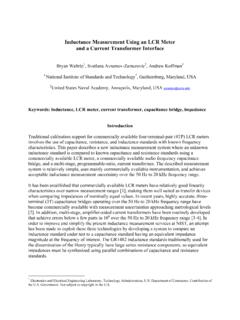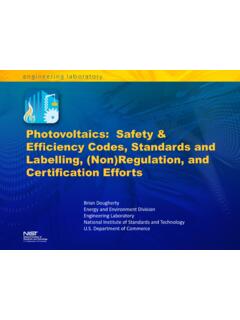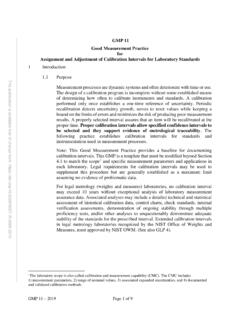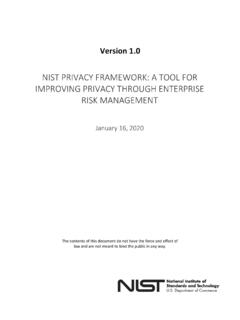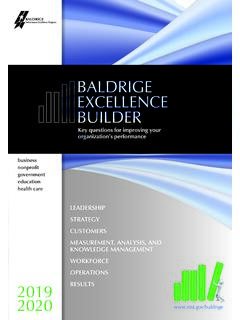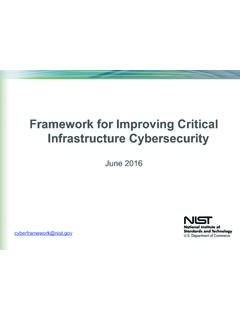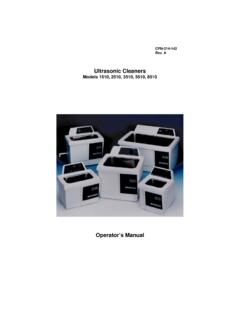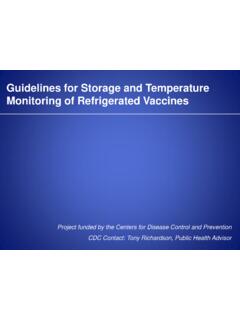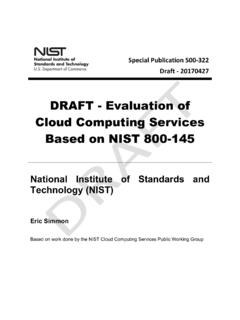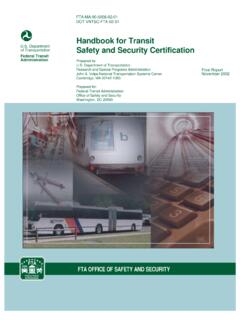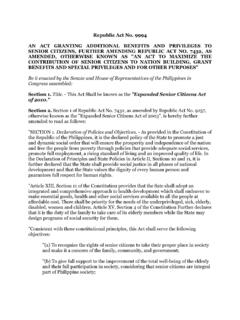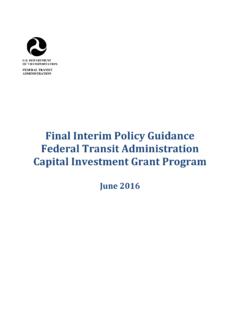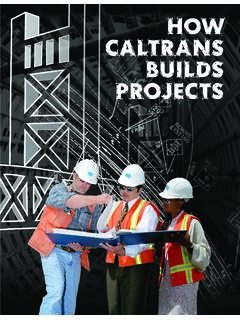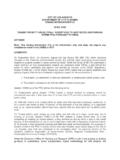Transcription of The Emerging U.S. Rail Industry: Opportunities to support ...
1 This paper examines the current state of the rail transit industry along with its manufacturing supply chain and provides recommendations about potential changes for policy makers and NIST MEP to consider. These recommendations are the opinions of the authors and are based upon the data and information collected and analyzed in the conduct of this study. The views expressed in the paper are those of the authors and do not necessarily represent the views or recommendations of the National Institute of Standards and Emerging rail Industry: Opportunities to support American manufacturing and spur regional developmentThe Emerging rail Industry1 Authors: Erik R.
2 Pages, Brian Lombardozzi and Lindsey WoolseyErik R. Pages is President of EntreWorks Consulting, an economic development consulting firm based in Arlington, VA. He has supported numerous projects that link manufacturers to new regional economic development Opportunities , including recent projects for the North Carolina Rural Center, the Roanoke Blacksburg (VA) Innovation Blueprint, and for state economic development agencies in Maine, Mississippi, and Lombardozzi is the principal of METPS, LLC and his work focuses on manufacturing, energy, and transportation policy strategies that specializes in federal, state, and local policy, making key connections between the business, labor, environmental and economic justice communities in working towards common policy Woolsey is the President of The Woolsey Group, LLC.
3 A research and technical assistance firm that works with state and local leaders on industry cluster development and sector strategies that better connect education and training programs to the needs of regional labor markets. She has worked with sector/cluster partnerships in manufacturing, energy, technology, bioscience, aerospace, agriculture, healthcare, tourism, and the creative to support American manufacturing and spur regional developmentExecutive SummaryA number of factors have come together to heighten the importance of rail transit to the U.
4 S. economy. These same factors present new Opportunities for domestic manufacturers of rail cars and equipment to benefit, however, historical and structural barriers to seizing these Opportunities exist. In brief, the scenario can be described as follows: rail ridership is strong and growing. Amtrak enjoyed its strongest year since its inception with ridership growing to million passengers in Fiscal Year 2012, a increase over the previous year, with July 2012 representing the single best month in Amtrak history. Overall ridership on commuter, light and heavy rail grew by 72% over the period from 1995 to 2008 and cities have added 29 new light rail and 20 new commuter rail systems in the last three decades.
5 Demand has led to new investment. In recent years Federal investments in rail passenger cars and locomotives have totaled several billion dollars. Efficiencies built into procurement policies for programs such as the High-Speed Intercity Passenger rail initiative and implementation of the Next Generation Corridor Equipment Pool Committee hold promise for continuing Federal awards. There have been parallel investments at the state level, for example, California s investment of $8 billion to develop America s first high speed factors create Opportunities for rail manufacturing, but challenges exist.
6 Consistent with provisions in the American Reinvestment and Recovery Act (ARRA), and previous legislation, these recent rail procurements contain Buy America provisions that require the use of goods manufactured in the United States. Currently, however, most rail equipment manufacturers are foreign-owned and limit activities to some final assembly work. Decades of limited business Opportunities in rail manufacturing have created significant gaps in both the capability and capacity of the domestic rail supply chain. Innovation and intelligent investment can help capitalize on these Opportunities .
7 Public agencies, as the primary buyers of new rail cars and equipment, can use their power as smart buyers to support demand driven innovation strategies. Looking to tap unutilized capacity in the existing manufacturing sector through supplier scouting efforts, investing in supply chain connectivity, and leveraging ongoing efforts to develop a more competitive manufacturing workforce can all aid the domestic rail industry s competitiveness. Examples from overseas present a variety of strategies that can accomplish these goals. Networking supply chains, such as the Supplier Scouting work of the Manufacturing Extension Partnership program, represents a promising practice.
8 The Hollings Manufacturing Extension Partnership (MEP) program, housed at the National Institute of Standards and Technology, has utilized its network of 60 MEP centers around the country to develop business intelligence on rail transit supply chain needs. These centers can rapidly reach out to their network of tens of thousands of small and mid-sized manufacturers to meet Emerging needs for domestic suppliers. A full description of the effort is included. rail manufacturing has potential as a driver of regional economic development. By combining top-down policies with a bottom-up approaches to viewing rail manufacturing as an economic development strategy communities and regions could generate significant synergies.
9 Investments in rail infrastructure reduce costs and pollution while increasing efficiency of transportation, access to goods, and career options. Helping local manufacturers capitalize on the business Opportunities represented by such investments would build on manufacturing s strong multiplier effect and ripple these benefits out into the region in the form of new jobs, more dynamic businesses, and a prosperous and diverse local economy. This paper explores each of these areas in detail and makes recommendations to policy makers on how they might best support a strong and growing domestic supply chain for the rail transit industry.
10 The Emerging rail Industry3 After decades of negative headlines, American manufacturers are enjoying some positive news. Media stories herald the renaissance of American manufacturing, with think tanks, business consultants and communities devising strategies for the reshoring of American manufacturing jobs. Capitalizing on the potential for an American manufacturing renaissance requires a host of investments and policy reforms to help build a more competitive innovation ecosystem for American This shift also requires a forward looking mindset that seeks to identify Emerging market Opportunities for both existing and new American manufacturing firms.
